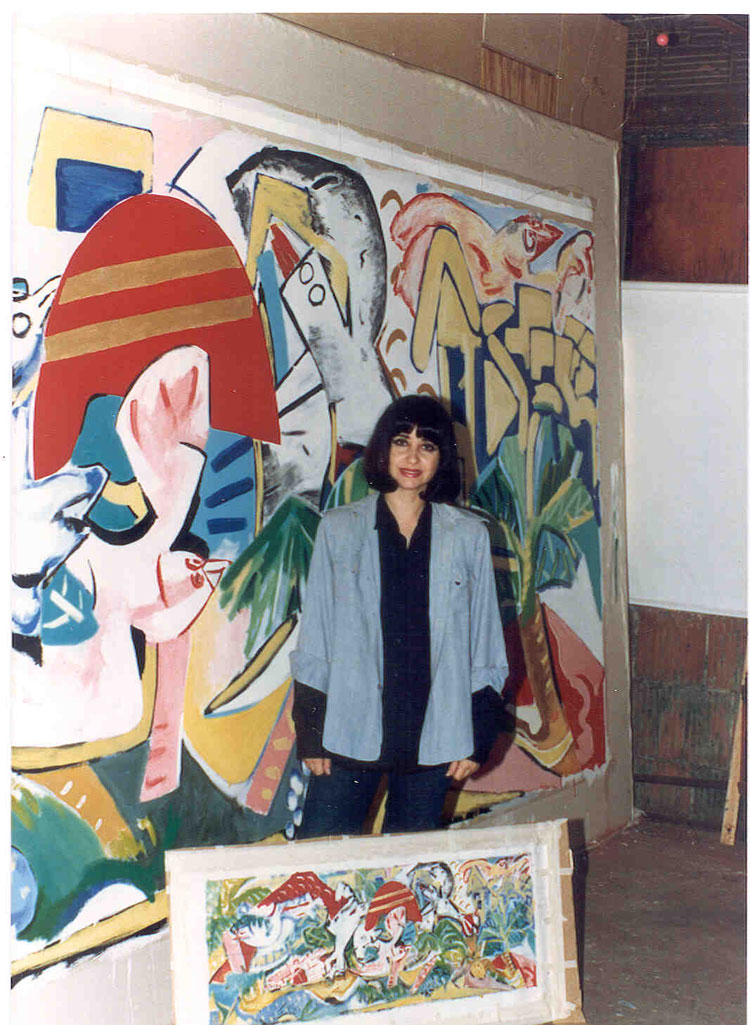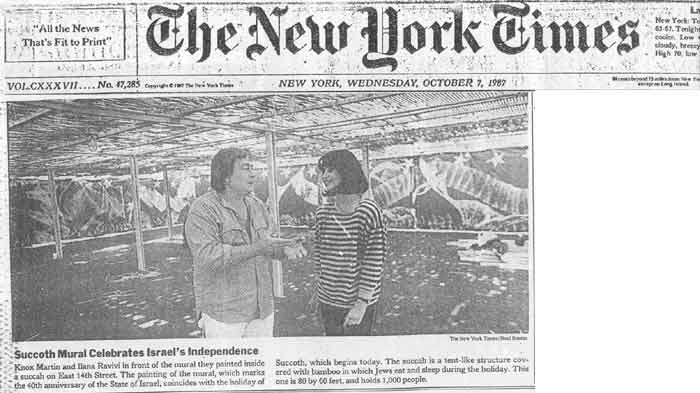Tabernacle of Peace – Homage to Zecharia

1987
ACRYLIC ON CANVAS 2.12M X 8M OR 83.4IN X 314.9IN
The story behind
In 1987, Ilana Raviv was commissioned to commemorate Israel’s 40th anniversary by creating a painting for the Tabernacle of Peace, the largest tabernacle in the world. The painting and tabernacle were displayed in Union Square, downtown Manhattan.
Spanning 212 cm x 800 cm (7 ft. x 26 ft.) the painting is on permanent display at the main entrance of the International Convention Center in Jerusalem. Raviv’s painting, “Homage to Zechariah”, depicts the City of Jerusalem, the feast of Succoth, the fruits of the land, the shaking of the palm branch towards the four winds of Heaven, and divine intervention, guarding the city of Jerusalem from above like a dove protecting her nestling. The painting’s composition is reminiscent of pieces of a puzzle that have come together, symbolizing hope and the idea of global peace.
Accompanying the painting is an ancient Hebrew script in Da’atz, also known as Paleo-Hebrew, an offshoot of the ancient Semitic alphabet used by Middle Eastern people, including the Israelites from at least the 10th century BCE.
As the primary script for the Hebrew language, Da’atz began to fall out of use in the 5th century BCE, and was replaced by the “Square-Script” Aramaic alphabet, which later paved the way for the Modern Hebrew alphabet.
During the Second Temple period, the ancient script was still used, primarily in ceremonial inscriptions and on coins. All coins of the First Revolt against the Romans (66-70 C.E.) were inscribed with these letters, as well as coins of the Second Revolt of Bar Kochba (133-135 C.E.). Such a late use was intended to symbolize the continuity of the Jewish people with their ancient past. It is interesting to note that although the Dead Sea Scrolls were written in the modern Hebrew alphabet – the name of God remained written in the Da’atz script. The painting’s accompanying quotation recites Zechariah’s prophecy in Chapter 14, Verse 16:
“And it shall come to pass that every one that is left of all the nations which came against Jerusalem shall even go up from year to year to worship the King, the Lord of hosts, and to keep the feast of tabernacles.”
The artist’s works can be found in various museums and galleries as well as in private and corporate collections around the world. Her work has been described as “synthetic realism” attaining worldwide appreciation by renowned art critics. The artist describes her work as “a different version of reality, a metaphor which creates and shapes an artificial life on canvas, a variety of flat designs and contrasts of shapes which create different levels of reality.” Raviv is the first Israeli-born artist to have had a solo exhibition at the State Russian Museum in St. Petersburg, Russia, and was recently honored by the City of
Tel-Aviv as Woman of the Year in the Arts for 2008.
A poster was presented at the Prime Minister’s Conference in Jerusalem in honor of the 60th anniversary of the State of Israel to all the participants.
Additional information about the artist can be found at the website: www.ravivart.com




